#dairy farming equipment
Explore tagged Tumblr posts
Text
#animal feed supplements#dairy farming equipment#animal accessories#Calcium Liquid for cow#Mineral mixture#animal feed products
0 notes
Text
Top Dairy Industry Cleaning Supplies | Pure Clean Supplies
Explore our extensive range of cleaning supplies specifically designed for the dairy industry. From sanitizers to specialized detergents, Pure Clean Supplies offers high-quality products to ensure a clean and safe environment. Perfect for farms, processing plants, and dairy facilities. Shop now for the best in dairy cleaning solutions!
#Dairy cleaning products#Dairy farm sanitation#Dairy equipment cleaner#Food-safe cleaning supplies#Industrial cleaning chemicals#Dairy hygiene products#Sanitizers for dairy industry#Effective dairy cleaning solutions#Commercial dairy cleaning#Milk processing cleaning supplies
0 notes
Text
WHAT AMOUNT OF LAND DO YOU NEED TO BEGIN A DAIRY FARM?
For each cow and calf combo, you need around 2 acres to start a dairy farm. The cattle must have at least this much space to graze. To ensure that your cow will have enough food throughout the year, you must do certain calculations before starting a dairy farm. However, if you are looking for Land for sale in Victoria, contact The Company, specialist in selling land, rural land, farmland. How much actual land do you require? What further things should you take into account? We shall investigate these concerns together.
Read More: https://thecompanyre.com.au/what-amount-of-land-do-you-need-to-begin-a-dairy-farm/
#land for dairy farm#acreage for dairy farm#mechanical equipment for dairy farm#land for bi-product management
0 notes
Text
PROMPT – SHRIDHAR MEHTA’S INNOVATION IN THE DAIRY INDUSTRY
The dairy industry has benefited significantly from Prompt Dairy Tech's domestic production capabilities and the Made in India initiative. This blog post by Gujpreneur dissects Shridhar Mehta's innovations in the dairy sector and his concepts aimed at improving the supply chain's traceability and transparency.
0 notes
Text
i want to milk twice a day in the summer months and once a day in the fall when the grass gets bad and i want to ride a mule out to get the livestock in with my cow dogs running alongside me and i want to watch the sunset and i want to make dairy products and i want to stargaze and i want to share my love for dairy with the world. but that will never happen because (censored) is prone to droughts and you'll never guess how many gallons of water a lactating holstein drinks in 1 (one) day
#ugh argh the emotions are getting to me#i feel like i dont want that much. i want a quiet area and to be left alone and i want to feed some people.#i want to show people the beauty in the world through caring for land and animals and watching the stars.#and it sucks that i wont ever get that because creameries are expensive and barns are expensive#and houses are expensive and land is expensive and vehicles/equipment are expensive#and farms dont get profitable for like 5 years so i'd have to just survive on savings for like 5 fucking years#and (censored) isnt super liberal so probably no one will want artisan dairy products.#my dream is coming crashing down and all i can do is complete my degrees and then move back home and hopefully make above 20$/hr#i'll be farming by 2030 or i'll be killing myself. im not going to waste my years rotting in an ice cream factory#when i could be galloping across the great plains and roughing it in the country#i dont WANT to live in a city. i want to live on 40 acres with a small house thats super soundproofed#and the nearest neighbor is a 15 minute drive away.#my friend was like you should come run my creamery with me! and i was like hell yeah!#but i dont want to live in iowa under her shadow :( i want my own creamery and my own livestock and everything that comes with it#and i know my parents will help me with like money stuff but im gonna be 19 hours away from them and two timezones away#and i dont know SHIT im just a city kid :(#sorry. anyway.#diary post
1 note
·
View note
Photo

First #haydryer for our client Jasper Hill Farm shipped to #USA #vermont and arrived in May 2015 - “… The #equipment is impressive and the #quality of #craftsmanship and #engineering are apparent. It is very nice! Thank you! (James Coe, architect/project manager/dairy farmer) 🍃🍃🍃 “Ground is broken! - On Jasper Hill’s new #hay facility… a whole new kind of #green !” (Mateo Kehler, owner, #cheesemaker, Jasper Hill Farm) 🍃🍃🍃 Have a good Hay! #dryhay #jasperhillfarm #dairy #farm #agriculture #regenerativeagriculture #innovation #technology #feed #hay #bale #roundbales #squarebales #AgriCompact #haydryers https://www.instagram.com/p/CltToBeMU1k/?igshid=NGJjMDIxMWI=
#haydryer#usa#vermont#equipment#quality#craftsmanship#engineering#hay#green#cheesemaker#dryhay#jasperhillfarm#dairy#farm#agriculture#regenerativeagriculture#innovation#technology#feed#bale#roundbales#squarebales#agricompact#haydryers
1 note
·
View note
Text
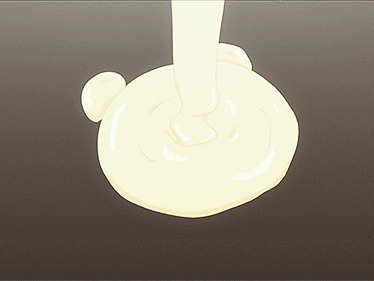
Calling König's toddlers picky eaters is the understatement of the century, if there ever was one. The word picky does not even describe how abhorrent his children are when it comes to eating food. Unlike their father, who will virtually eat anything you put in front of him no matter if it is burnt or decayed due to how he was brought up with food being a limited supply, so he is just happy to eat for once (for context on how horrific be one time you found a whole ecosystem in a bowl in his fridge that smelt like complete rot and he said it was still fine to eat), they will refuse anything and if you dare bring new foods around them expect it to be thrown onto the floor. For weeks on end, they will refuse any other food but their current fixation, then randomly, their little minds decide one day that the food is now their greatest enemy and will refuse to eat it and anything else until they find their next fixation.
The foods they always like? The main ones are any type of fish or meat that was fried or breaded, cheese, or anything made of potatoes, cream, bread, pasta, and strawberries. The foods they always hate? The obvious ones, like most toddlers their age, are vegetables and fruits, but their hate list also includes anything new, slimy, or that smells or looks slightly off.
Given how picky they can be, König has had to become creative in getting them to eat a healthy diet.
Luckily, with having a well-paid job, a dodgy side hustle/”hobby”, and enough savings to make an average person have a heart attack König can afford to be able to get creative when he is cooking for his darlings. He will spend hours upon hours searching online for recipes and then perfecting them to make sure that the taste of vegetables will be unrecognisable so that they will finally eat them. No matter how hard or time-consuming it is, he continues to do it just because he knows it is the best for his toddlers and he can have nothing but the best for the lights of his life. After enough tests and trials with having his toddlers be his taste testers, he realised what worked best and spent thousands upon thousands of euros to get the equipment to continue doing this.
The first step König makes to put his big plan into action is to make deals with some local farmers and fishers at the market in one of the nearby villages or towns who will drop off fresh produce like meat, vegetables, fruits, grain, and dairy products for him and his kids to eat and in return, he pays them highly for both dropping off the food and giving him some of the best product. He also pays a few to help him set up his own mini farm in his garden so that he can grow a few things himself and with his toddlers so they appreciate their food more as they know where it comes from (if anyone is interested, I can expand on this idea). His next step is to order cookie cutters online, whether they be ones he had to have custom-made or ones he just found randomly when scrolling on some shopping site he had the recruits recommend him; the reason why he decides to order them is because he realised that his toddlers are more likely to eat their food or try new food if it is themed around their interests.
And, his final step is to redo his entire kitchen from the stove to the sinks to the fridge (he decides to get two double fridges rather than the single one he had before) while getting more utensils that are not the normal things like a spatula or grater as they are more appliances like food mixer for baking or a slow cooker or a rice cooker until his kitchen was full of cooking equipment. He had brought everything he could think of and that others at KorTac or online had recommended, even if it was over the top and had cost him tens of thousands of euros, but his children were worth it all, even if it was a bit of a sink in his pocket.
With his set-up complete and recipes at hand, König can begin cooking for his picky eaters. Due to his toddlers’ preference for fried food such as chicken nuggets, he will put the chicken through the grinder himself to make a paste into which he can put chopped vegetables such as onions, peppers, corn, or mushrooms into which he can then season and bread after using the cookie cutters to make special shapes such as dinosaurs or shark or stars or rockets, it just depends on his what his toddlers’ interests are. He makes tiny edits to most of the recipes, since he prefers to make the components by hand, to make them healthier so that his toddlers have all the nutrients they need so they do not suffer like he did as a child where certain nutrients were neglected in favour of others. König will then spend hours in the kitchen preparing his meals, never letting his toddlers see his crafty tricks that get them to be healthy, which he will then serve to them like it is their regular food.
Examples of the displays of main dishes he puts together for his toddlers are fried fish in the shape of sharks with vegetables cut out in the shape of fish and potatoes that look like coral as it is plated on a water/ocean-themed plate if the toddler’s interest is sharks or a mashed potato volcano with a broccoli forest and vegetable shavings grass with dinosaur nuggets running away as it is plated on a forest-themed plate if the toddler’s interest is dinosaurs or vegetable shavings grass with chicken nuggets in the shape of bunnies with potato fries in the shape of Easter eggs or carrots as it is plated on a grassland-themed plate if the toddler’s interest is bunnies as Miffy has been getting extremely popular or alien shaped chicken or fish nuggets with mashed potato meteors, vegetables shaped into planets or stars, and one massive fry in the shape of a rocket as it is placed on a galaxy-themed plate if the toddler’s interest is the stars and space. Normally, the main dishes will come with a side of any food group he does not add to the main dish, or it may be extras he thinks his toddlers will like but wants them to control the amount they have, like a mixture of cheese he shredded or others vegetables he cut up that they can use to break up their main meal or a fresh bun he had brought.
While the examples of desserts and snacks he makes for his toddlers are milk bread sandwiches with a filling of cream, jam, and fruits that are cut into any shapes his toddlers want that day, or he will use an ice cream machine he brought to make a more healthy version of ice cream that he will sneak more fruits into that he thinks will match the flavour (such as strawberries and blueberries or peaches added into vanilla ice cream or bananas added into vanilla ice cream) with frozen or dried fruit shavings as a topping or a snack they can chew on in the middle of the day or tiny, or little cupcakes filled with fruit pieces and topped with homemade cream that can fit into their tiny little hands as he uses cut up fruits to add features such as spines or bunny ears or marshmallows with details on like stars or paw prints or specially shaped pancakes that are decorated with fruits and whipped cream to give details to make it look like their interests like dinosaurs or cats.
But this is not everything. With the countless recipes he has, he can make countless displays so that his toddlers are never bored. He may substitute one ingredient for another if he wants his children to try new foods or if he wants to change the taste slightly to stop boredom. He may substitute and swap options for new variety or when he thinks his kids are lacking, as he just wants to make sure they are healthy and try any food possible.
#cod#call of duty#konig#könig#könig call of duty#könig cod#cod konig#konig cod#konig call of duty#konig mw2#cod fluff#fluff#konig fluff#konig fanfiction#könig fanfiction#könig mw2#könig fluff#fluff headcanons#könig headcanons#konig headcanons#ozzie's headcanons#ozzie's könig headcanons#ozzie's dad!könig headcanons#dad!könig#dad!könig headcanons#domestic!könig headcanons#domestic fluff#dad fluff#ozzie's domestic!könig headcanons
122 notes
·
View notes
Text
Male calves are often considered entirely disposable by the dairy industry, though some farms are equipped to exploit them for other purposes. Regardless, no male calf will live beyond the age of 2 years before being killed - and in some cases, the end can come within the first few hours of life.
Male dairy calves can be sold for beef production to eventually be turned into food like hamburgers. They're sent to feedlots, which are penned-in facilities that can hold up to 150,000 cattle, where they are confined and fed grain diets so that they gain weight and can be slaughtered as quickly as possible.
Calves are separated from their mothers, fed an artificial milk replacement, and prevented from fully socializing or even touching another animal until they are sent to the slaughterhouse, which occurs when calves are 8-16 weeks old.
In the United Kingdom, where veal crates have long been outlawed due to their overt cruelty, it's often cheapest to simply shoot male calves shortly after their birth. In the UK, close to 60,000 male calves are disposed of in this way every year. This practice is also disturbingly common in the United States, and in Australia, where one survey revealed that around 600,000 male calves were killed on dairy farms every year when they are just a week old.
Image with kind permission from The Ethic Whisper.
@theethicwhisper

22 notes
·
View notes
Text
Milton Orr looked across the rolling hills in northeast Tennessee. “I remember when we had over 1,000 dairy farms in this county. Now we have less than 40,” Orr, an agriculture adviser for Greene County, Tennessee, told me with a tinge of sadness.
That was six years ago. Today, only 14 dairy farms remain in Greene County, and there are only 125 dairy farms in all of Tennessee. Across the country, the dairy industry is seeing the same trend: In 1970, more than 648,000 US dairy farms milked cattle. By 2022, only 24,470 dairy farms were in operation.
While the number of dairy farms has fallen, the average herd size—the number of cows per farm—has been rising. Today, more than 60 percent of all milk production occurs on farms with more than 2,500 cows.
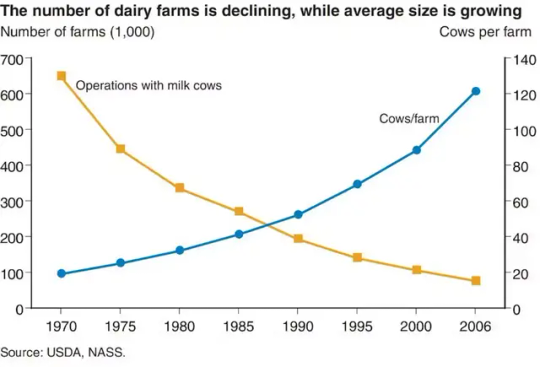
This massive consolidation in dairy farming has an impact on rural communities. It also makes it more difficult for consumers to know where their food comes from and how it’s produced.
As a dairy specialist at the University of Tennessee, I’m constantly asked: Why are dairies going out of business? Well, like our friends’ Facebook relationship status, it’s complicated.
The Problem with Pricing
The biggest complication is how dairy farmers are paid for the products they produce.
In 1937, the Federal Milk Marketing Orders, or FMMO, were established under the Agricultural Marketing Agreement Act. The purpose of these orders was to set a monthly, uniform minimum price for milk based on its end use and to ensure that farmers were paid accurately and in a timely manner.
Farmers were paid based on how the milk they harvested was used, and that’s still how it works today.
Does it become bottled milk? That’s Class 1 price. Yogurt? Class 2 price. Cheddar cheese? Class 3 price. Butter or powdered dry milk? Class 4. Traditionally, Class 1 receives the highest price.
There are 11 FMMOs that divide up the country. The Florida, Southeast, and Appalachian FMMOs focus heavily on Class 1, or bottled, milk. The other FMMOs, such as Upper Midwest and Pacific Northwest, have more manufactured products such as cheese and butter.
For the past several decades, farmers have generally received the minimum price. Improvements in milk quality, milk production, transportation, refrigeration, and processing all led to greater quantities of milk, greater shelf life, and greater access to products across the US. Growing supply reduced competition among processing plants and reduced overall prices.
Along with these improvements in production came increased costs of production, such as cattle feed, farm labor, veterinary care, fuel, and equipment costs.

Researchers at the University of Tennessee in 2022 compared the price received for milk across regions against the primary costs of production: feed and labor. The results show why farms are struggling.
From 2005 to 2020, milk sales income per 100 pounds of milk produced ranged from $11.54 to $29.80, with an average price of $18.57. For that same period, the total costs to produce 100 pounds of milk ranged from $11.27 to $43.88, with an average cost of $25.80.
On average, that meant a single cow that produced 24,000 pounds of milk brought in about $4,457. Yet, it cost $6,192 to produce that milk, meaning a loss for the dairy farmer.
More efficient farms are able to reduce their costs of production by improving cow health, reproductive performance, and feed-to-milk conversion ratios. Larger farms or groups of farmers—cooperatives such as Dairy Farmers of America—may also be able to take advantage of forward contracting on grain and future milk prices. Investments in precision technologies such as robotic milking systems, rotary parlors, and wearable health and reproductive technologies can help reduce labor costs across farms.
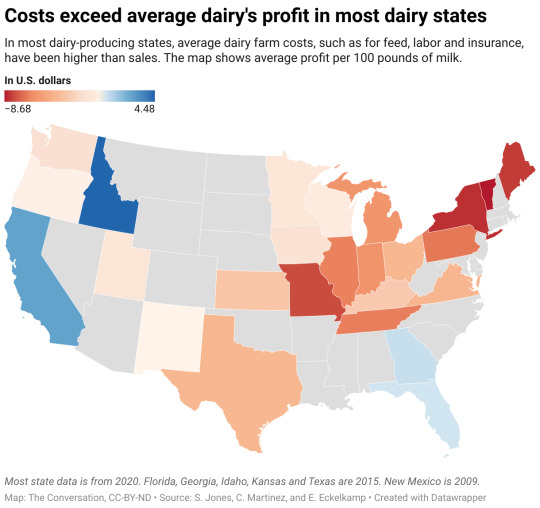
Regardless of size, surviving in the dairy industry takes passion, dedication, and careful business management.
Some regions have had greater losses than others, which largely ties back to how farmers are paid, meaning the classes of milk, and the rising costs of production in their area. There are some insurance and hedging programs that can help farmers offset high costs of production or unexpected drops in price. If farmers take advantage of them, data shows they can functions as a safety net, but they don’t fix the underlying problem of costs exceeding income.
Passing the Torch to Future Farmers
Why do some dairy farmers still persist, despite low milk prices and high costs of production?
For many farmers, the answer is because it is a family business and a part of their heritage. Ninety-seven percent of US dairy farms are family owned and operated.
Some have grown large to survive. For many others, transitioning to the next generation is a major hurdle.
The average age of all farmers in the 2022 Census of Agriculture was 58.1. Only 9 percent were considered “young farmers,” age 34 or younger. These trends are also reflected in the dairy world. Yet, only 53 percent of all producers said they were actively engaged in estate or succession planning, meaning they had at least identified a successor.
How to Help Family Dairy Farms Thrive
In theory, buying more dairy would drive up the market value of those products and influence the price producers receive for their milk. Society has actually done that. Dairy consumption has never been higher. But the way people consume dairy has changed.
Americans eat a lot, and I mean a lot, of cheese. We also consume a good amount of ice cream, yogurt, and butter, but not as much milk as we used to.
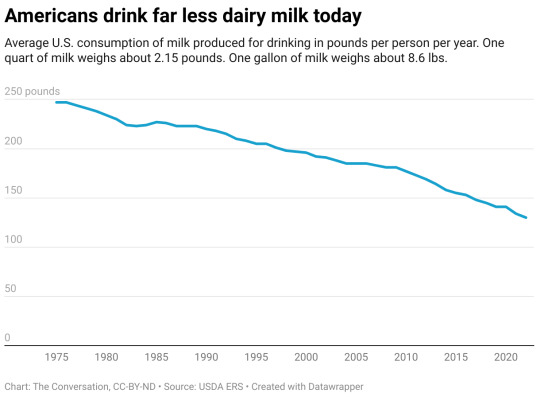
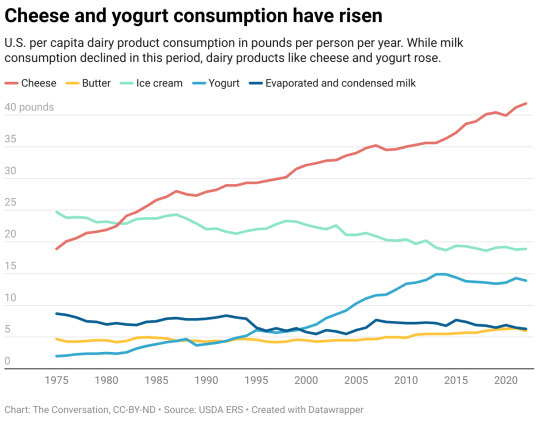
Does this mean the US should change the way milk is priced? Maybe.
The FMMO is currently undergoing reform, which may help stem the tide of dairy farmers exiting. The reform focuses on being more reflective of modern cows’ ability to produce greater fat and protein amounts; updating the cost support processors receive for cheese, butter, nonfat dry milk, and dried whey; and updating the way Class 1 is valued, among other changes. In theory, these changes would put milk pricing in line with the cost of production across the country.
The US Department of Agriculture is also providing support for four Dairy Business Innovation Initiatives to help dairy farmers find ways to keep their operations going for future generations through grants, research support, and technical assistance.
Another way to boost local dairies is to buy directly from a farmer. Value-added or farmstead dairy operations that make and sell milk and products such as cheese straight to customers have been growing. These operations come with financial risks for the farmer, however. Being responsible for milking, processing, and marketing your milk takes the already big job of milk production and adds two more jobs on top of it. And customers have to be financially able to pay a higher price for the product and be willing to travel to get it.
33 notes
·
View notes
Text


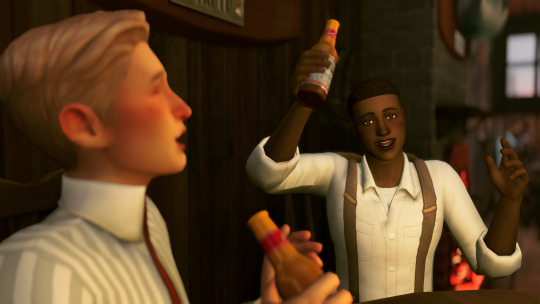
Spring 1916
It wasn't often that Will and his old school chums got together these days. Ever since they'd left the small Brindleton schoolhouse, moments in which all four were free had become infrequent. Clive's schooling in Britechester hadn't helped the matter, but the Brindleton based boys had also struggled to see each other with any regularity. Tonight was one of those glorious times that their schedules had matched up, and just in time, for Clive had returned home and they were all celebrating his graduation at The Wet Dog.
"To Doctor Guillen!" John was shouting as he toasted Clive, sloshing much of his ale at the same time. The other men followed suit and yet more ale joined John's on the floor.

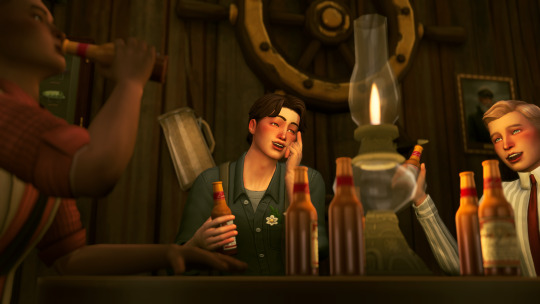

The evening had perhaps started along a more proper path, with congratulations all around for Clive's recent graduation and upcoming nuptials to a Britechester girl; these congratulations had of course been accompanied by a round of drinks. Al had then shared the surprising news that he and his wife, Posie, were expecting. Another round had of course been necessary to celebrate the news. Each round had had a good reason to be drunk, Will thought, a bit fuzzily, but for the life of him he couldn't quite remember all of them just now.
Despite the activity of the evening, Will was distracted; Joe's offer stubbornly at the forefront of his thoughts. He had not shared news of it with anyone, holding it close, so it came as somewhat of a surprise when he found himself blurting the news out.
Initial confusion could be attributed to the less than sober nature of the party, but after Will's explanation, excitement overtook.



“I’ll say, that sounds splendid!” Clive exclaimed. “My father’s been thinking about getting a motorcar, it would make house calls *that* much easier. He’s an awful hand with anything mechanical, though — human bodies, sure, but really anything else, and the man’s completely lost,” he said with a laugh. “I’m sure he’d be real happy to have that here in Brindleton. Plus, automobiles are spreading like wildfire; Carissa says you can’t cross the street in San Myshuno without having one honk at you.”
The others were quick to chime in with their excitement over the offer, and Will felt their support wash over him like a balm; suddenly the idea didn't seem so harebrained.
"What did you father say?" John questioned animatedly, "he's always had such a head for all that modern stuff, he'll talk Pa's ear off about new farm equipment any time he's down at the store." John had quickly hit on Will's biggest concern over this enterprise: Hamish's reaction.
"I haven't told him," Will said honestly. "He really relies on my help and I don't want to leave him in a lurch or anything. We've both built the dairy up into what it is now, and I don't know how he'd feel about me leaving; I think we both always assumed I'd take it over for him one day." It was true, Will had spent the last decade pouring his blood and sweat into their expanding business; they were now one of the largest suppliers of milk to the local cheese factory.
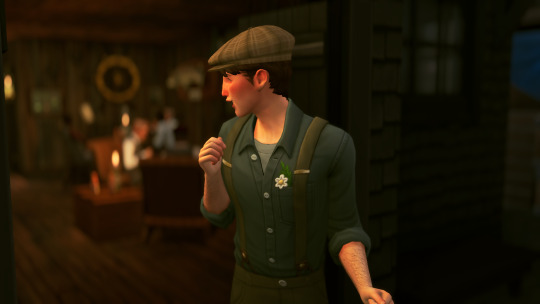
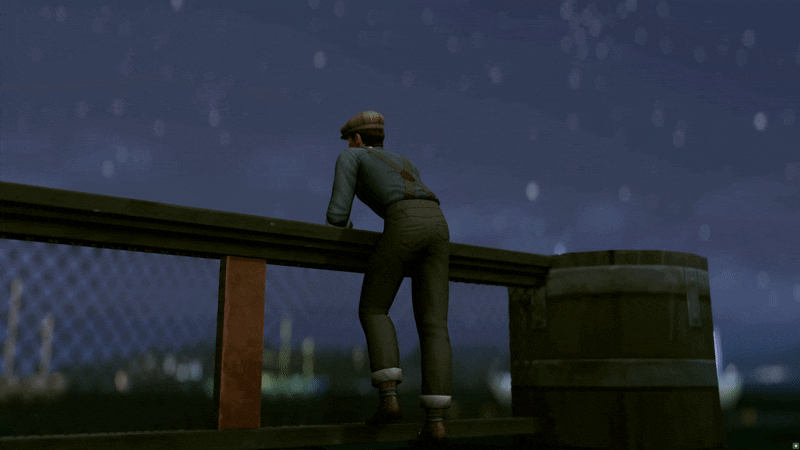

Will was realizing that he wanted to take this job with Joe more than he’d ever wanted anything before. In ‘06, when the blight had decimated their orchard, and, with it, any chance for Will to pursue a further education, he had been relatively unbothered; school had held little interest to him. But this was different; he wanted it so deeply it hurt. He had spent so many years with his head down, not allowing any thoughts for a future outside the farm, and — now that he had — the feelings beat upon him as powerfully as the waves upon the shore during a storm. He felt as powerless to resist their pull as a grain of sand to a wave.
~~~~~~~~~~~~~~~~~~
next / previous / first
#ts4#sims 4 legacy#the sims 4#ts4 legacy#sims 4#ts4 decades challenge#sims 4 decades challenge#decades challenge#ts4 storytelling#sims 4 storytelling#sims 4 historical#ts4 historical#sewell legacy#sewell legacy 1910s#william sewell#sewell 1910s
104 notes
·
View notes
Text
Also preserved on our archive (That's right: It's more than just covid!)
Centers for Disease Control and Prevention (CDC) has confirmed two human cases of H5 bird flu from specimens submitted by California. The cases occurred in people with occupational exposure to infected dairy cows. An investigation led by California is ongoing. The identification of H5 in people with exposure to infected animals is not unexpected and does not change CDC's risk assessment for the general public, which continues to be low.
At this time, there is no known link or contact between the first and second confirmed cases in California, suggesting these are separate instances of animal-to-human spread of the virus. CDC continues to collaborate closely with California and other state public health officials to support state-run efforts to control the spread of H5N1 from infected animals to humans; California's active monitoring highlights the steps being taken at the state level to lower the risk to farm workers who may be in contact with animals with H5N1. In the coming days, CDC will conduct additional characterization of the viruses, including sequencing, isolating and growing the viruses, if possible.
These are the first human cases of H5 in California, where H5N1 outbreaks among dairy herds were first reported in August 2024. H5N1 bird flu was detected for the first time in cows this year in the United States. The virus is widespread in wild birds and has caused ongoing outbreaks among poultry in the United States since 2022. It has caused rare, sporadic infections in people who work with infected animals, such as dairy cow workers and poultry workers. Including this most recent case, 16 human cases of H5 have been reported in the United States during 2024, bringing the total to 17 cases since 2022. Six of the 16 reported human cases have been linked to exposure to sick or infected dairy cows.Nine cases had exposure to infected poultry.
CDC has recommendations to protect people against H5N1 bird flu in dairy cattle. These include avoiding contact with wild birds and sick or dead animals and not preparing or eating unpasteurized (raw) milk or raw cheese. If you work with dairy cows or other animals that could be infected with H5N1 bird flu, wear personal protective equipment (PPE) when in contact with (or around) dairy cows, raw milk, other animals, or surfaces and other items that might be contaminated with virus. CDC recently issued updated personal protective equipment guidance (PPE) to prevent H5N1 bird flu infection.
CDC recommends that if you get sick after close contact with infected animals, contact your local health department and a health care provider for testing. Symptoms of H5 include eye redness (conjunctivitis), mild flu-like upper respiratory symptoms, fever, cough, sore throat, difficulty breathing, runny or stuffy nose, and muscle aches.
#Bird flu#avian influenza#H5N1#California#public health#mask up#wear a mask#wear a respirator#still coviding
10 notes
·
View notes
Text

#land for dairy farm#acreage for dairy farm#mechanical equipment for dairy farm#land for bi-product management
1 note
·
View note
Note
Please give us som Vlad headcanons!!! :)
Oh boy, you're gonna wish you'd never asked 😆 Long post ahead
🎧 Vlad is a huge fan of 80s synth-pop and new wave. Depeche Mode, The Cure, The Smiths, Duran Duran, Tears For Fears, Pet Shop Boys, a-ha, and New Order, to name just a few.
🎵 On a similar (quarter) note, music from the late 70s and early 80s is still difficult for him to listen to because it reminds him of the years he was pining for Maddie, the accident, and being hospitalized. Mid-80s music and beyond, when he began to take his life back and build his wealth and power, is his "good old days" music.
🎹 Another music headcanon: In Familiar, I hinted at Vlad being a pianist. I think he'd look pretty hot playing a saxophone, maybe even a trumpet. And Martin Mull is a pretty good guitarist and singer, so Vlad also having those talents would be really cool. But I like to believe that Vlad plays the geekiest, dorkiest, nerdiest, most Slav-coded instrument of all: the accordion. Just imagine him torturing Danny and Sam and Tucker with polka music and ballads about cheese while on a camping trip. Maybe Wulf howling in agony from somewhere in the woods.
🧀 Yeah, he’s basically the negaverse equivalent of Weird Al.
👂 Vlad got his ear pierced in the mid-90s.
🔥 Despite being a fire specter ("having a fire core", to use the phandom terms), Vlad loves the cold. Winter is his favorite season, Christmas his favorite holiday. A bit of a spoiler for either chapter 13 or 14 of Familiar: Vlad is a superb ice skater.
💔 Besides his mother, Maddie was the only woman Vlad ever loved.
🐄 Vlad grew up the son of a poor Wisconsin dairy farmer. His mother was a first-generation Romanian* immigrant. He was the first member of his family to go to college, and on a full scholarship. He has no siblings. (*I may adapt Vlad’s nationality depending upon the story/art/situation, but generally I like to HC him as Romanian, which you can see on his backpack here in this AU.)
👊 Vlad was a victim of bullying in his teen years. Because of his first name and his ethnicity—not to mention his appearance and disposition: skinny, gangly, "ugly", shy, nerdy, poor—Halloween was always a miserable time for him: getting pelted with plastic vampire fangs in the hallways at school; cruel nicknames like "Count Vladislob" or "Vladis-louse"; racist remarks about his Romani mother; "Bleh bleh! I vant to suck your bluud!" It was awful.
✌��� Because he spent so many years being made to feel ashamed of his unusual name, when he became rich and successful after obtaining his ghost powers, he put his name and initial everywhere. V for Vlad.
🏈 Vlad got his love of Green Bay from his father. Apart from a shared surname, it was one of the only two (2) things he and his dad had in common.
🔧 Working on farm machinery like tractors and hay balers was the other. Vlad and his dad would often fix the farm equipment themselves rather than hire a mechanic—mostly out of necessity. Vlad is still pretty good with a monkey wrench, though in college his focus shifted from engineering to physics after meeting Jack and Maddie.
🚀 Vlad grew up in the sixties. Space race, the moon landing, the Cold War. Every kid his age had space fever. Vlad was no exception. His bedroom walls were a collage of stars, rockets, shuttles, astronauts, and cosmonauts. Yuri Gagarin was his hero. He wanted to be an astronaut when he grew up. (Just like Danny.)
🩸 I mentioned this on another post, but I'll add it here, too: Vlad's obsession with gaining more power stems from the trauma and weakness he experienced when he was hospitalized. He made a vow to never be that helpless again.
🪦 Both of Vlad's parents were dead by the time he got out of the hospital. He was estranged from the rest of the Masters family and therefore had no one to turn to.
👶 Because of this, Vlad became obsessed with having a family of his own. Ironically, the accident sterilized him. He will never be able have biological children.
🍪 Some of Vlad’s happiest memories are baking with his mother. He had (and still does have) quite a sweet tooth—and a penchant for cooking.
#annnd i think that's a good place to stop. for now#danny phantom#vlad masters#vlad plasmius#dp headcanons#meta#many of these ideas appear in familiar. so if they look ''familiar'' that's why#fic: familiar#asks
52 notes
·
View notes
Note
For someone who wants to work on a farm, do you have any suggestions? Most farm jobs seem to be part time summer work, which I have done, but I’m wondering if it’s possible to do it full time and pay the bills, as I love working with animals and working outside.
Farm work is often seasonal until you gain some background in the mechanics of planting, animal care and probably knowledge of machine and equipment upkeep.
Check into feed stores, feed mills, large year round operations like dairy farms or pig farms. They run through All seasons and often need laborers.
You might have to work several part time jobs at first. In my experience Farmers hire those who prove themselves valuable.
I work for a full time farm/agri amusement park (haunted houses, corn maze, pumpkins, flowers etc) and while some parts of the year are full time (spring, summer, fall) winter is quiet once we’ve stored everything away for the season.
Check into Apple orchards, pumpkins farms and others that serve a client base and learn as much as you can. Ask to be taught various tasks. I drive a tractor pulling a hay rack, mow, care for animals, much pens, help put up hay, work a cash register, weed flowers and empty garbage. All this came about because I knew how to make kettle corn.
Any job you take learn all you can. Feed stores need a cashier, grain processors need someone who can keep records, animals poop (a lot) so being okay with clean up is a valuable trait.
It is possible to be s full time farm hand. Winter time means maintenance and cleaning but it might take some time and skill building.
Check with your local State Extension office about jobs, job training and ideas.
79 notes
·
View notes
Text
Kent farm and country Clark Headcanons
Some headcanons about the Kent family farm that @januariat requested I post about :)
I grew up on a farm and at our peak we had a couple hundred head of beef cattle (we’ve had registered angus cattle for about 100 years, and have been farming since the family settled in that area in the mid 1800s I think? We’re no longer at that farm, the parents moved themselves and the cattle to another one in the state, so they’re still farming). We also did a lot of crop farming, mostly corn, wheat, and soybeans. Dad had some hay fields that he would mow and bale multiple times throughout throughout the summer/fall to make bales as some of the food to feed our cattle throughout the year. My siblings and I were involved in 4H/FFA growing up (my sister and I were in 4H, my brother did 4H and then FFA when he got to high school). We always raised two steers to take to our county fair as projects (and maybe some breeding and open class projects on the side), and my brother did shop/metal working projects as well. Needless to say, I have a lot of THOUGHTS and FEELINGS about Clark growing up on a farm in a small rural community.
I don’t read the comics (except WFA), and most of my interaction with the Superman/Clark Kent fandom has been through watching the newer movies, being in fandom discords, reading Tumblr posts, and fanfic that I’ve read. This was just something fun for me to ponder about based on my life experiences (I also work in the ag industry, specifically the meats industry if you couldn’t tell from my username, lol)
For the type of farm, I think the Kents would have a lot of acreage do crop farming. I'm not as familiar with any specialty crops grown in Kansas, but as I stated before, the big three that were grown on my farm growing up were corn, wheat, and soybeans. Those are pretty popular crops to grow in the midwest, so I could see the Kents growing those too. Not sure how viable it would be, but sunflowers can also grown as a crop. I like the thought of the Kents maybe growing that because, you know, Kansas.
If they had any livestock, it would be a small amount. I’m not 100% sure on Clark’s current age in the comics, but if he was around before the 1980s, he might remember his parents raising some cattle or hogs as an extra way to get cash. Unfortunately, there was a farm crisis that hit the Midwest in the 80s, and it hurt a lot of small farms. Now a days, you have to to be raising a lot of one animal to make any kind of profit (if any). If you’re raising hogs, you need a barn that holds 2000+ head finishing hogs to make money (I worked in one of these barns and a hog nursey that held 5000+ during covid when I got laid off from my job. It SUCKS. I developed a new fear in life of being eaten alive by 300+ lb pigs, but that’s a story for another day). It’s the same with chicken and turkey as well, but I’m not as sure on the barn size. If the Kents do have any livestock, it would be animals that would be used to supplement their diet, like a small flock of chickens for eggs, and a dairy animal (goat or cow? Maybe goat since they’re smaller and don’t take up as much space as a cow. Might also be easier to handle for the Kent parents as they get older, but I’ve never owned a goat before, so don’t quote me on that. Goats are smart and are pretty good at getting in trouble, lol).
If the Kents have any large meat livestock, like cattle, it would only be one or two, which leads me to my next headcanon, that Clark was in 4H/FFA growing up! I love, love, LOVE the idea of Clark being in 4H or FFA while in school at Smallville, and having a beef or dairy beef steer(s) as a livestock project. Also, Clark would show his project animals at his county fair! I don't think he would win or do well in the main classes. From my experience, usually it's families that are big into showing cattle, and you need a lot of money for that for all the equipment and supplies that goes with it. They also tend to travel a lot with those animals, and show them in other contests as well (maybe state fair. If you want to hear a rant about how much I don’t like show cattle and the show cattle industry, hmu). If anything, Clark would probably do well in the showmanship shows. That's more dependent on the trust between you and your animal, and how much you've worked with them. I can definitely see Clark working with his animals everyday, cleaning, feeding, and leading them. You know someone has really worked with there animal if they can lead and stop them so the animal’s feet are positioned correctly without having to use a show stick to move the feet (yes, there is a correct way cattle need to stand when showing. A lot of terminology describing the feet positions too. Again, if you want more details, hmu).
On top of showing cattle, I also love the thought of Clark taking a shop project through FFA/4H, especially if it's welding. He could use it as a way to practice with his laser vision! You can definitely tell a good weld from a bad weld, and I can see Clark working on his laser vision skills to improve. My brother and Dad would work on, fix and build equipment and fences with welding, so I can also see Clark learning how to do that to help out on the farm! And I'm sure Jonathan Kent would appreciate it since he wouldn't have to spend as much money on the welding and torch gasses and the equipment that goes with it.
Welp, those are my headcanons for Clark, the Kents, and farming. I’m sure if you poke me, I could go into more detail on somethings, or think of more headcanons about those topics. Most of my ag experience has been in raising beef cattle, so that shaped most of these headcanons that I have. If you or someone else in the Superman fandom have a farming background, please tell me what your headcanons are!! I would love to hear them! Growing up on a farm was a big part of Clark’s life, so we need more country Clark stories!
#superman#clark kent#headcanon#along with large clark superiority I also believe in country clark superiority#thank you januariat for asking me about this!
88 notes
·
View notes
Note
Survivalist anon here again with an update and some local development in my area.
The spacewolves trio have become regular visitors to my property. They're enjoying the brewing silo I've constructed for them and the pack leader seems to patrolling more and more near by. It feels a little more safer around here knowing I've got such a wonderful pack nearby. The two youngest are like older brothers, the pack leader is a little more reserved yet his affections come in the form animal skulls, interesting left behind trinkets...and recently a hand carved charm. My place pretty has been considered a second den for them.
Now, I may have some new developments. There's been reports of a fast moving marine in the area. The local farmers have been devastated by a string of predations from a "mysterious beast" that kills every few days. An eyewitness that I interviewed a while states she saw the thing that slaughtered six of her prize sheep and the leading ram. It was a dark colored marine with red eyes a white face.
In an unrelated incident, another bloodsucker of sorts was caught red handed....or should I say red mawed...when a local dairy farm found him laying down with a nearly insanguinated cow. Apparently the big red vamp felt guilty for what he did and stopped halfway before he could dry the poor thing up. It recovered, but local law enforcement have no idea what to do with him.
Any suggestions?
~ Survivalist anon
@egrets-not-regrets @liar-anubiass-blog @barn-anon @bleedingichorhearts
Congrats that you're still alive!
Good call on the silo. Space wolves, and most space marines but, like to have multiple places to call home and be able to rendezvous at a particular location or safe space. Now your home might just be a location that should things go bad they use as a rally point, maybe even use it as a place to go along the way to check on you, they also could be using your property to store some extra supplies. All depends on the space marines. But, gifts are a great sign!
If its "midnight clad" it might be a Night Lord. I'm safe to say that if the word "face" is used. Unlike early descriptions of Astartes when human skin leather would adorn their armor the whole person's face description might reference to really any type of Chaos Space Marine. But, Night Lords have a skull face motif so it might be them, might be a mutated Chaos Space Marine, could even be a blood angel's chaplain since chaplain's (usually) have skull masks.
Blood Angels, regardless of loyalty, suffer from something called 'the Red Thirst' so they usually need periodic intakes of blood. Sounds like he wasn't getting anything recently. My suggestion is actually to let the nearest base of blood angels know about him because they are equipped to handle it. If they can't I mean someone could foster him until they can come look at him.
Good luck!
#warhammer 40k#reply#space marine husbandry#space marine husbandry sentience#answer#tales from the barn#lore drop#survivalist anon
18 notes
·
View notes